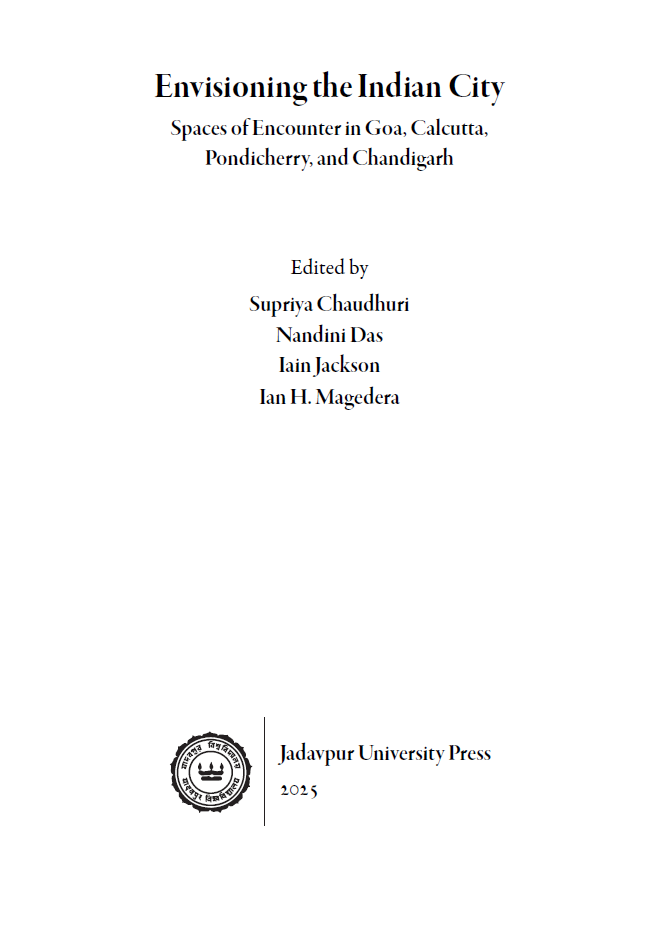Publications
Chandigarh at the Crossroads: a view from New Delhi and Calcutta
Bandyopadhyay, S. 2025. Chandigarh at the Crossroads: a view from New Delhi and Calcutta. In S. Chaudhuri, N. Das, I. Jackson, & I. H. Magederay (eds.), Envisioning the Indian City: Spaces of Encounter in Goa, Calcutta, Pondicherry, and Chandigarh, pp.342-376. Kolkata, India: Jadavpur University Press.
About the Book
Jawaharlal Nehru’s vision of Indian modernity is often reflected in his remarks at Chandigarh’s inauguration, where he described the city as free from the existing encumbrances of old towns and old traditions and symbolic of the freedom of India. At the 1959 Seminar on Architecture, architect Achyut Kanvinde recorded Nehru’s perspective on Chandigarh as an experimental project designed to provoke thought and new ideas. He valued its creative approach, which broke away from ancestral constraints and focused on light and air and ground and water and human beings. Regardless of its success, Chandigarh was, for Nehru, an essential departure from architectural stasis, which he associated with a broader static condition of India’s past.
This chapter explores how Nehru’s views on modernity shaped Chandigarh and examines its relationship with Lutyens-and-Baker-designed Imperial New Delhi. While Chandigarh aimed to symbolise a break from colonial-era architecture, scholars argue that elements of classical and Baroque organizational tendencies persisted. The discussion highlights how Le Corbusier, despite his modernist ambitions, incorporated lessons from New Delhi’s design evolution.
Another key topic covered is the intersection of Indian Modernism and Le Corbusier’s methods. The article questions whether early Indian Modern artistic tendencies, emerging as early as 1922, could have contributed to a more grounded Modernist movement. It focuses on three themes in the Capitol complex: topography, plan composition, and the use of significant fragments. These elements are compared to artistic expressions such as Gaganendranath Tagore’s Cubist paintings of the 1920s and architectural developments in Santiniketan under Rabindranath Tagore. While these Indian modernist approaches are often overlooked due to their eclectic and expressionist character, the discussion challenges the idea that Modernism in India was purely derived from Western influences.
The article draws from Le Corbusier’s sketchbook entries and the writings and correspondence of Lutyens and Baker to reassess the influences shaping Chandigarh. Both classical and Modernist approaches claimed universality or eternal familiarity, yet the predominant architectural references remained Western. By exploring these intersections, the discussion provides a deeper understanding of how Chandigarh both embraced and resisted colonial architectural legacies in post-independence India.

| Author(s) | Soumyen Bandyopadhyay Supriya Chaudhuri Nandini Das Iain Jackson Ian H. Magedera |
| Country | India |
| Language | English |
| Subject | Architecture |
| Area covered | Modernism, Postcolonialism |
| Publisher | Jadavpur University Press |
| Publication date | 2025 |
| Type | Book |
| Pages | – |
| ISBN | 978-81-967852-6-0 |
